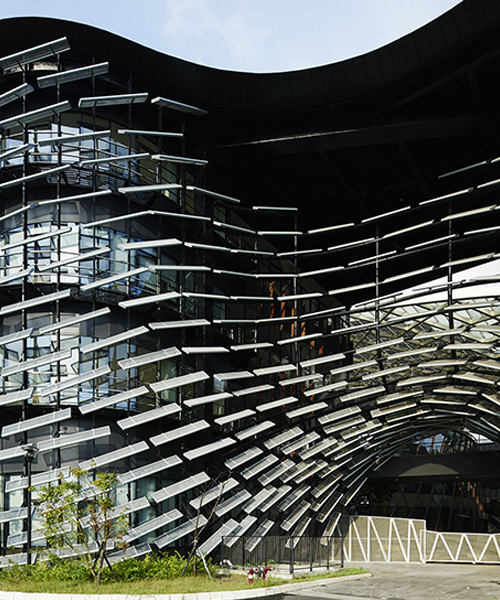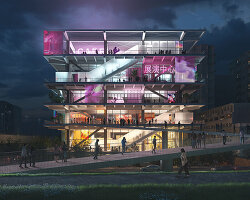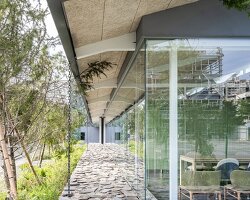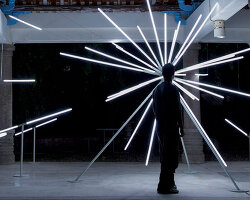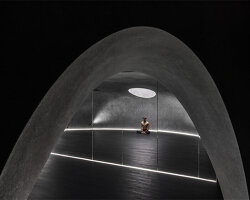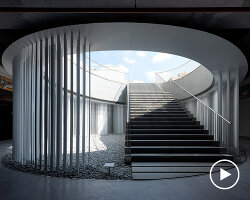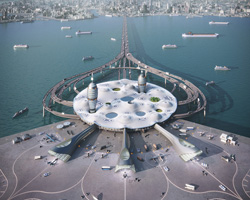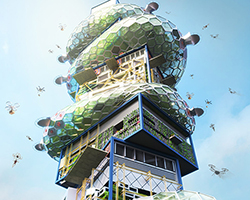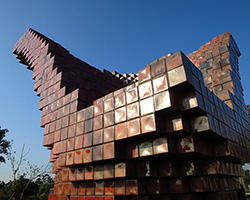noiz architects clads innovation campus in taiwan to resemble swimming fish
(above) the industrial technology research institute is located at the central taiwan innovation & research park
image © daici ano
the industrial technology research institute (ITRI), located at central taiwan innovation and research park in nantou, taiwan, is a public research institute promoting industrial innovations in taiwan, and it is expected to be a central facility for science park to be built in this region. noiz architects collaborated with bio architecture formosana to enter the design competition for the facility (in april 2010) and won the first prize. during the development phase, the project site had to be relocated once during the design development phase, and the construction finally completed in september 2014. noiz was in charge of the entire exterior design including building envelope, façade, roofscape, and landscape while bio architecture formosana was responsible for the architectural design.
 west tunnel towards interior courtyard
west tunnel towards interior courtyard
image © daici ano
ITRI program includes various research laboratories, library, exhibition area of the latest technologies, greenhouse for research, café and so on. different degrees of lightness were required according to the nature of research at each laboratory in this research complex. it was not possible to adjust lightness by changing shape or size of each opening and such solution would also result in a disorganized exterior appearance. in addition, due to heavy-duty building service requirements to fulfill functions of the research facility, numerous ducts, and pipes, which numbers and locations will increase in the future, would be exposed on the façades.
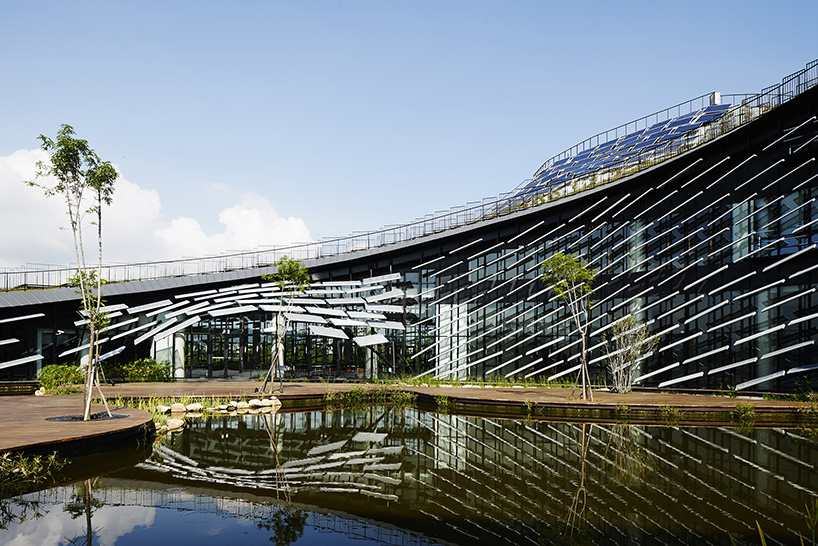 view towards pond and cafeteria
view towards pond and cafeteria
image © daici ano
the design solution was to provide soft veil-like façade layers composed of 4000 fins, which are offset from curtain walls, creating the double-skin building envelope. the double-skin composition allows to hide maintenance space in between while providing flexibility for future addition of pipes and ducts without affecting the landmark appearance of the building. various environmental simulations were ran to reach the final 3D patterns of the fin to achieve the maximum ecological, economical and functional values by computational methods. the interior light environment is controlled by adjusting densities and angles of the fins, while the fin system gives the integrated appearance to the facility.

west façade
image © daici ano
the fins resemble a school of fish- the fins are positioned at various angles, while as a whole creating a large flow and giving a dynamic impression to the building. they are made of expanded aluminum sheet, creating a lightweight impression of the façade while allowing exterior views from the interior to some extent. a fin-generating program was created based on various rules including the position of vertical supports, circulation routes, natural light requirements of the adjacent rooms and others. however, due to cost reduction, an optimization program was developed with added parameters such as balance of exterior appearance and building cost. and eventually, the façades were eventually achieved, composed of three types of fins, which resulted in the substantial cost reduction.
 façade detail
façade detail
image © daici ano
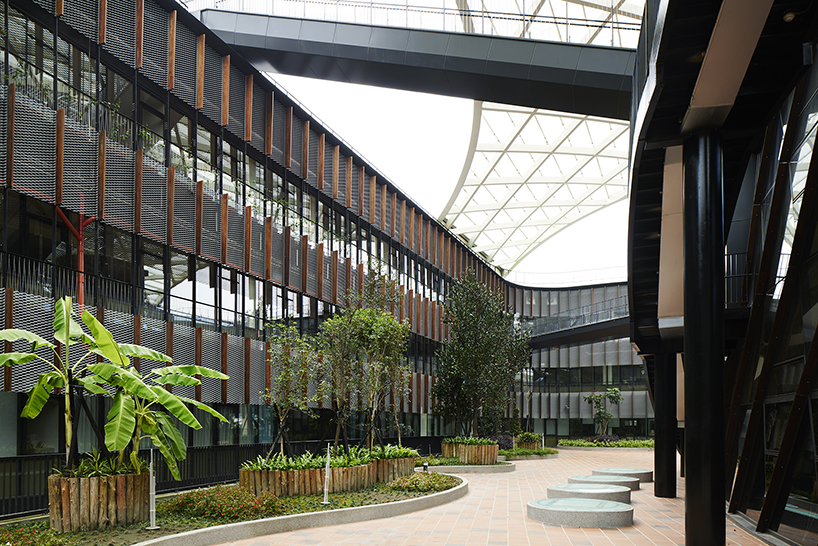 view of courtyard
view of courtyard
image © daici ano
 view of courtyard 2
view of courtyard 2
image © daici ano
 façade detail 2
façade detail 2
image © daici ano
 façade fin system
façade fin system
image courtesy arup & partners
 façade optimization study
façade optimization study
image courtesy noiz architects
 façade optimization study
façade optimization study
image courtesy noiz architects
 exploded façade diagram
exploded façade diagram
image courtesy noiz architects
designboom has received this project from our ‘DIY submissions‘ feature, where we welcome our readers to submit their own work for publication. see more project submissions from our readers here.
edited by: juliana neira | designboom
